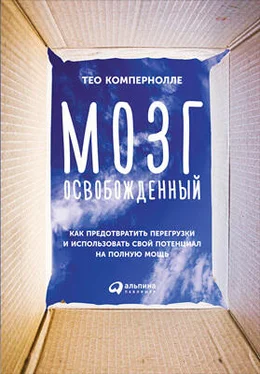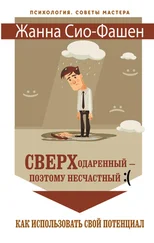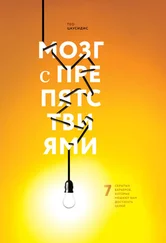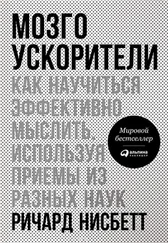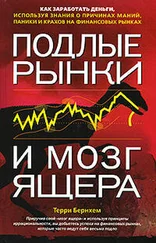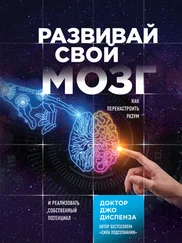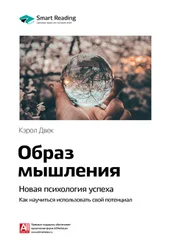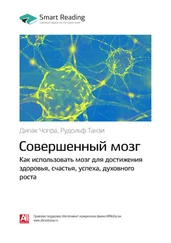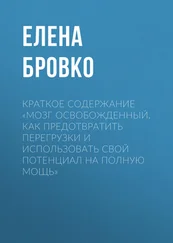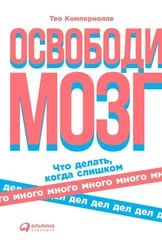Blue light improves cognitive performance. Lehrl S., Gerstmeyer K., Jacob J.H., Frieling H., Henkel A.W., Meyrer R., Wiltfang J., Kornhuber J., Bleich S. J Neural Transm. 2007; 114(4), pp. 457–460.
Evening exposure to a light-emitting diodes (LED)-backlit computer screen affects circadian physiology and cognitive performance. Christian Cajochen, Sylvia Frey1, Doreen Anders, Jakub Spati, Matthias Bues, Achim Pross, Ralph Mager3, Anna Wirz-Justice1, and Oliver Stefani. Journal of Applied Physiology, 1 May 2011, vol. 110, no. 5, pp. 1432–1438.
Light level and duration of exposure determine the impact of self-luminous tablets on melatonin suppression. Brittany Wood, Mark S. Rea, Barbara Plitnick, Mariana G. Figueiro. Applied Ergonomics. Доступно онлайн 31 июля 2012.
Can light make us bright? Effects of light on cognition and sleep. Chellappa S.L., Gordijn M.C., Cajochen C. Progress in Brain Research. 2011(190): pp. 119–133.
Exposure to room light before bedtime suppresses melatonin onset and shortens melatonin duration in humans. Gooley J.J., Chamberlain K., Smith K.A., et al. Journal of Clinical Endocrinology and Metabolism. 2011; 96(3): pp. E463–472.
Daytime light exposure dynamically enhances brain responses. Vandewalle G., Balteau E., Phillips C., et al. Current Biology. 2006; 16(16), pp. 1616–1621.
Evening exposure to a light-emitting diodes (LED)-backlit computer screen affects circadian physiology and cognitive performance, Christian Cajochen, Sylvia Frey1, Doreen Anders, Jakub Späti1, Matthias Bues, Achim Pross, Ralph Mager, Anna Wirz-Justice1, and Oliver Stefani. Journal of Applied Physiology, 1 May 2011, vol. 110, no. 5, pp. 1432–1438.
Light level and duration of exposure determine the impact of self-luminous tablets on melatonin suppression,Brittany Wood, Mark S. Rea, Barbara Plitnick, Mariana G. Figueiro, In press: Applied Ergonomics. Доступно онлайн 31 июля 2012 http://www.sciencedirect.com/science/article/pii/S0003687012001159
Non-Visual Effects of Light on Melatonin, Alertness and Cognitive Performance: Can Blue-Enriched Light Keep Us Alert? Sarah Laxhmi Chellappa,Roland Steiner,Peter Blattner, Peter Oelhafen, Thomas Gӧtz, and Christian Cajochen. PL oS One. 2011; 6(1) Photons, clocks, and consciousness. Brainard GC, Hanifin JP.J Biol Rhythms. Aug 2005; 20(4), pp. 314–325.
Alerting effects of light, Christian Cajochen, Sleep Medicine Reviews, Volume 11, Issue 6, Dec 2007, pp. 453–464.
2011 National Survey of the Sleep Foundation. http://www.sleepfoundation.org/sites/default/files/sleepinamericapoll/SIP_2011_Summary_of_Findings.pdf
Identifying some determinants of “jet lag” and its symptoms: A study of athletes and other travellers. Waterhouse, J.; Edwards, B.; Nevill, A.; Carvalho, S.; Atkinson, G.; Buckley, P.; Reilly, T.; Godfrey, R.; Ramsay, R. (2002). British journal of sports medicine 36 (1): pp. 54–60.
Excellent review: Jet lag: trends and coping strategies. Jim Waterhouse, Thomas Reilly, Greg Atkinson, Ben Edwards. Lancet 2007; 369: 1117–1129.
Haimov I, Arendt J. The prevention and treatment of jet lag. Sleep Med Rev 1999; 3: pp. 229–240.
Work and rest sleep schedules of 227 European truck drivers, P. Philip, J.Taillard, D. Léger, K. Diefenbach, T. Akerstedt, B. Bioulac, C. Guilleminault, Sleep Medicine, Volume 3, Issue 6, Nov 2002, pp. 507–511.
Social Jetlag and Obesity. Till Roenneberg, Karla V. Allebrandt, Martha Merrow, Céline Vetter. Current Biology, 22 May 2012, Vol. 22, Issue 10, pp. 939–943.
Circadian Rhythm Sleep Disorders: Part I, Basic Principles, Shift Work and Jet Lag Disorders. An American Academy of Sleep Medicine Review. Sleep. Robert L. Sack, MD, Dennis Auckley, MD, R. Robert Auger, MD, Mary A. Carskadon, PhD, Kenneth P. Wright, Jr, PhD, Michael V. Vitiello, PhD, and Irina V. Zhdanova, MD. Sleep. 1 Nov 2007; 30(11), pp. 1460–1483.
Shift Work Disorder: Overview and Diagnosis. Thomas Roth, PhD. Brief report. J. Clin. Psychiatry 2012; 73. http://www.psychiatrist.com/briefreports/series-1/BR2/index.asp
Shift Work Disorder in Nurses – Assessment, Prevalence and Related Health Problems. Flo E., Pallesen S., Magerøy N., Moen B.E., Gronli J., et al. (2012) PL oS ONE 7(4) Circadian Phase, Sleepiness, and Light Exposure Assessment in Night Workers With and Without. Valentina Gumenyuk, Thomas Roth, and Christopher L. Drake, 6 Chronobiology International 2012 29: 7, pp. 928–936.
Исчерпывающий обзор: SHIFT WORK: Shift work, safety and productivity, Simon Folkard and Philip Tucker. Occup Med (Lond) (2003) 53 (2): pp. 95–101.
Junior doctors’ extended work hours and the effects on their performance: the Irish case. Fiona Flinn and Claire Armstrong. Int J Qual Health Care (2011) 23 (2): pp. 210–217.
Remarks by dr. Chuck Czeisler, sleep specialist with harvard medical school. http://wakeupdoctor.org/index.php?option=com_content&view=article&id=54&itemid=55
Effect of Reducing Interns’ Weekly Work Hours on Sleep and Attentional Failures Steven W. Lockley, and many others., N. Engl. J. Med. 2004; 351: pp. 1829–1837.
Effect of Reducing Interns’ Weekly Work Hours on Sleep and Attentional Failures Steven W. Lockley, and many others., N. Engl. J. Med. 2004; 351: pp. 1829–1837.
Extended Work Shifts and the Risk of Motor Vehicle Crashes among Interns. Laura K. Barge et al.New England J. of Medecine, 13 Jan 2005.
Effects of Health Care Provider Work Hours and Sleep Deprivation on Safety and Performance. Lockley, Steven W. et al. Joint Commission Journal on Quality and Patient Safety, Volume 33, Supplement 1, Nov 2007, pp. 7–18(12).
Effect of Reducing Interns’ Weekly Work Hours on Sleep and Attentional Failures. Steven W. Lockley, et al. New England J. of Medecine, 28 Oct 2004.
T. Akerstedt, G. Kecklund, S.E. Johansson. Shift work and mortality. Chronobiol Int, 21 (6) (2004), pp. 1055–1061.
Trends in the risk of accidents and injuries and their implications for models of fatigue and performance. S. Folkard, T. Åkerstedt. Aviat Space Environ Med, 75 (3) (2004), pp. A161–A167.
Sleep on the night shift: 24-hour EEG monitoring of spontaneous sleep/wake behavior. L. Torsvall, T. Åkerstedt, K. Gillander, A. Knutsson. Psychophysiology, 26 (3) (1989), pp. 352–358.
A prospective study of fatal occupational accidentstive study of fatal occup difficulties and occupational factors. T. Åkerstedt, P. Fredlund, M. Gillberg, B. Jansson. J Sleep Res, 11 (2002), pp. 69–71.
Suppression of sleepiness and melatonin by bright light exposure during breaks in night work. T. Åkerstedt, G. Kecklund, S.E. Johansson. Shift work and mortality. A. Lowden, T. Åkerstedt, R. Wibomhronobiol Int, 21 (6) (2004), pp. 1055–1061.
Transport and industrial safety, how are they affected by sleepiness and sleep restriction? Pierre Philip, Torbjorn Åkerstedt. Sleep Medicine Reviews. Volume 10, Issue 5, Oct 2006, pp. 347–356.
Отличный обзор: The impact of daylight saving time on sleep and related behaviours. Harrison, Y. (2013). Sleep medicine reviews. Volume 17, Issue 4, August 2013, pp. 285–292.
Individual response to the end of Daylight Saving Time is largely dependent on habitual sleep duration. Biological Rhythm Research, 44(3), 391–401.Harrison, Y. (2013).
Читать дальше
Конец ознакомительного отрывка
Купить книгу
